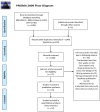Comparative Effectiveness of Phosphate Binders in Patients with Chronic Kidney Disease: A Systematic Review and Network Meta-Analysis
- PMID: 27276077
- PMCID: PMC4898688
- DOI: 10.1371/journal.pone.0156891
Comparative Effectiveness of Phosphate Binders in Patients with Chronic Kidney Disease: A Systematic Review and Network Meta-Analysis
Abstract
Background: Chronic kidney disease-mineral and bone disorder (CKD-MBD) has been linked to poor health outcomes, including diminished quality and length of life. This condition is characterized by high phosphate levels and requires phosphate-lowering agents-phosphate binders. The objective of this systematic review is to compare the effects of available phosphate binders on patient-important outcomes in patients with CKD-MBD.
Methods: Data sources included MEDLINE and EMBASE Trials from 1996 to February 2016. We also searched the Cochrane Register of Controlled Trials up to April 2016. Teams of two reviewers, independently and in duplicate, screened titles and abstracts and potentially eligible full text reports to determine eligibility, and subsequently abstracted data and assessed risk of bias in eligible randomized controlled trials (RCTs). Eligible trials enrolled patients with CKD-MBD, randomized them to receive calcium (delivered as calcium acetate, calcium citrate or calcium carbonate), non-calcium-based phosphate binders (NCBPB) (sevelamer hydrochloride, sevelamer carbonate, lanthanum carbonate, sucroferric oxyhydroxide and ferric citrate), phosphorus restricted diet, placebo or no treatment, and reported effects on all-cause mortality, cardiovascular mortality or hospitalization at ≥4 weeks follow-up. We performed network meta-analyses (NMA) for all cause-mortality for individual agents (seven-node analysis) and conventional meta-analysis of calcium vs. NCBPBs for all-cause mortality, cardiovascular mortality and hospitalization. In the NMAs, we calculated the effect estimates for direct, indirect and network meta-analysis estimates; for both NMA and conventional meta-analysis, we pooled treatment effects as risk ratios (RR) and calculated 95% confidence intervals (CIs) using random effect models. We used the GRADE (Grading of Recommendations, Assessment, Development and Evaluation) approach to rate the quality of evidence for each paired comparison.
Results: Our search yielded 1190 citations, of which 71 RCTs were retrieved for full review and 15 proved eligible. With 13 eligible studies from a prior review, we included 28 studies with 8335 participants; 25 trials provided data for our quantitative synthesis. Results suggest higher mortality with calcium than either sevelamer (NMA RR, 1.89 [95% CI, 1.02 to 3.50], moderate quality evidence) or NCBPBs (conventional meta-analysis RR, 1.76 [95% CI, 1.21 to 2.56, moderate quality evidence). Conventional meta-analysis suggested no difference in cardiovascular mortality between calcium and NCBPBs (RR, 2.54 [95% CI, 0.67 to 9.62 low quality evidence). Our results suggest higher hospitalization, although non-significant, with calcium than NCBPBs (RR, 1.293 [95% CI, 0.94 to 1.74, moderate quality evidence).
Discussion/conclusions: Use of calcium results in higher mortality than either sevelamer in particular and NCBPBs in general (moderate quality evidence). Our results raise questions about whether administration of calcium as an intervention for CKD- MBD remains ethical. Further research is needed to explore the effects of different types of phosphate binders, including novel agents such as iron, on quality and quantity of life.
Systematic review registration: PROSPERO CRD-42016032945.
Conflict of interest statement
Figures




References
-
- Levey AS, Coresh J, Balk E, Kausz AT, Levin A, Steffes MW, et al. National Kidney Foundation practice guidelines for chronic kidney disease: evaluation, classification, and stratification. Annals of internal medicine. 2003;139(2):137–47. Epub 2003/07/16. . - PubMed
-
- Ibels LS, Alfrey AC, Huffer WE, Craswell PW, Anderson JT, Weil R 3rd. Arterial calcification and pathology in uremic patients undergoing dialysis. Am J Med. 1979;66(5):790–6. Epub 1979/05/01. . - PubMed
-
- Sanchez-Perales C, Vazquez Ruiz de Castroviejo E, Garcia-Cortes MJ, Biechy Mdel M, Gil-Cunquero JM, Borrego-Hinojosa J, et al. Valvular calcifications at the start of dialysis predict the onset of cardiovascular events in the course of follow-up. Nefrologia. 2015;35(2):157–63. Epub 2015/08/25. . - PubMed
Publication types
MeSH terms
Substances
LinkOut - more resources
Full Text Sources
Other Literature Sources
Medical
Miscellaneous

